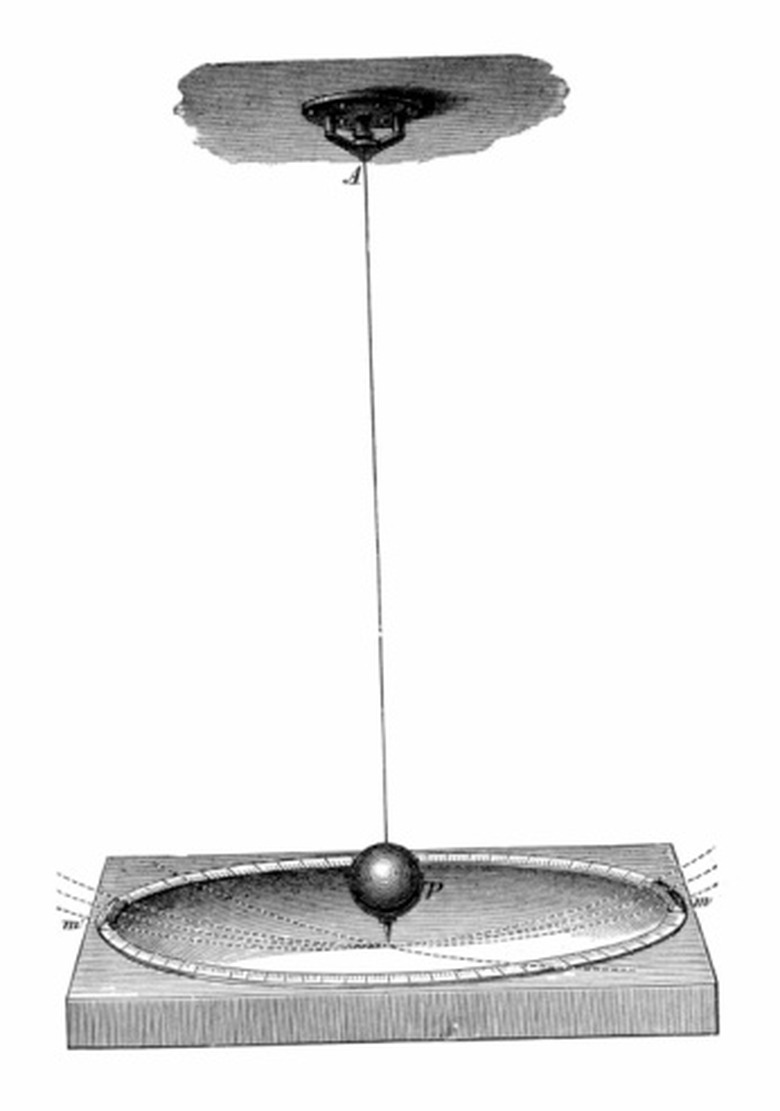Facts About Pendulums
A pendulum is basically any weight on the end of a string or chain that can swing from side to side, with a constant period of movement, as long as the pendulum's angle is no greater than about 20 degrees. There is evidence that pendulums were used in ancient Egypt and Rome as a dowsing and divination devices, but their use may pre-date recorded history. Using pendulums in clocks to keep time was an innovation of the 17th century.
Pendulums in Healthcare
Pendulums in Healthcare
Holistic medical practitioners may sometimes use a dowsing pendulum for making diagnoses and determining the most appropriate treatment for a patient's condition. The pendulum is held over different parts of the body and, depending on how the pendulum swings, the practitioner determines the locations of infections. The pendulum is also placed over a range of remedies; the medications that are most beneficial for the patient are supposed to stimulate the pendulum to move in their direction.
Galileo
Galileo
Galileo observed a swinging chandelier in a cathedral in 1588, demonstrating an apparently continuous perpetual motion. This observation instigated an in-depth study of pendulums. Around 1602 Galileo began serious investigations into the usefulness of the pendulum as a time-keeping device. Galileo failed to produce a functional timepiece, due to problems with air friction and the difficulty of transferring the energy from the pendulum's oscillations to a cog-wheel.
Christian Huygens of the Netherlands
Christian Huygens of the Netherlands
In 1657, Christian Huygens, a physicist and mathematician from the Netherlands, succeeded in producing the first clock based on Galileo's initial findings. The pendulum clock then became the standard time-keeping instrument. Large clocks were developed, including the famous London clock tower Big Ben, which has continued to work as an efficient timepiece ever since it was built.
Divination with a Pendulum
Divination with a Pendulum
Psychics and healers have used pendulums since ancient times for divination, locating things or simply seeking the answer to a question. These pendulums were usually made from a crystal or a gold ring hanging from a silk cord or a light gold chain. The pendulum is allowed swing freely while a yes/no question is asked. The direction the pendulum swings–either clockwise, counter-clockwise or from side to side–suggests the answer. Held over a map, the pendulum is gradually moved motionless across the map, and when it starts to swing or drops, the location is recorded. This method is used for finding gold, oil, and minerals for mining as well as to locate underground water, find a lost object and even locate people.
Cite This Article
MLA
London, John. "Facts About Pendulums" sciencing.com, https://www.sciencing.com/pendulums-8538891/. 24 April 2017.
APA
London, John. (2017, April 24). Facts About Pendulums. sciencing.com. Retrieved from https://www.sciencing.com/pendulums-8538891/
Chicago
London, John. Facts About Pendulums last modified March 24, 2022. https://www.sciencing.com/pendulums-8538891/
